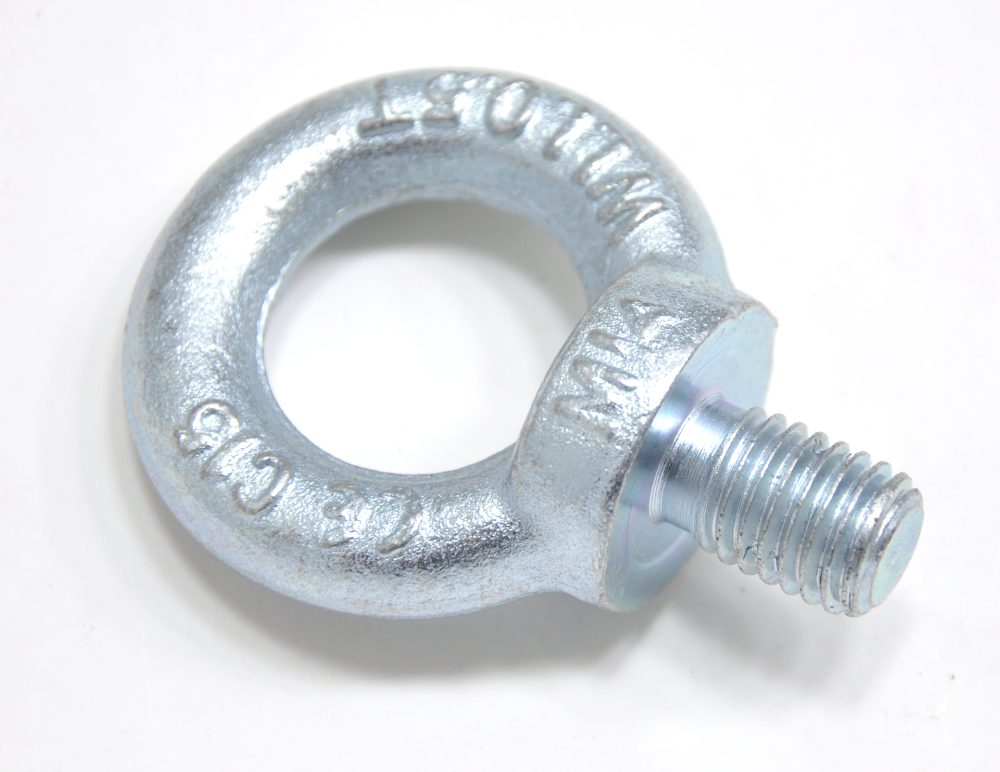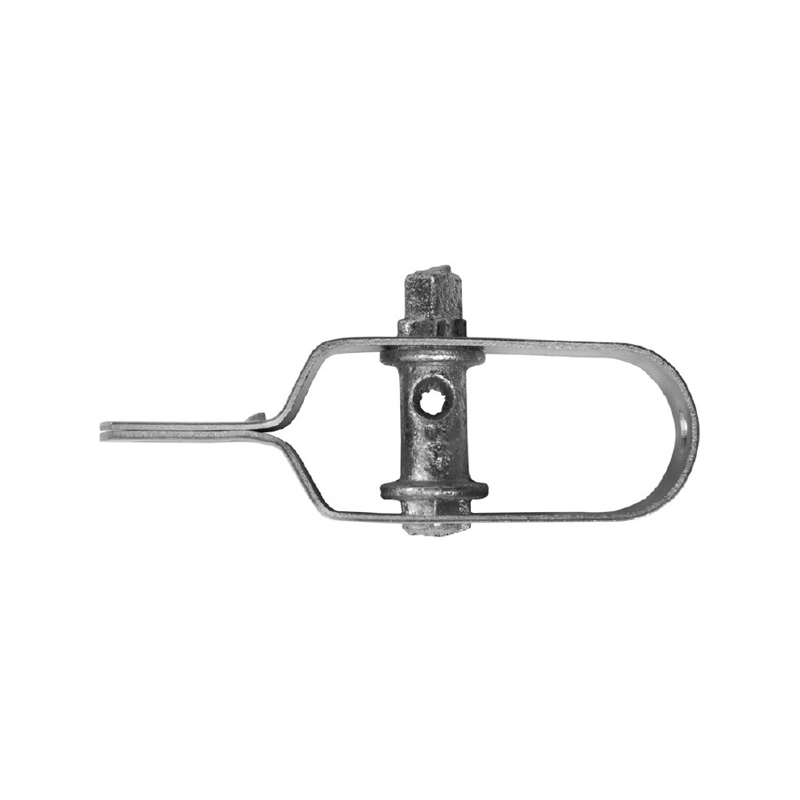Blog
Testing a turnbuckle typically involves assessing its functionality, load-bearing capacity, and overall condition. Here is a general procedure to test a turnbuckle:
Visual Inspection: Start by visually examining the turnbuckle for any signs of damage, such as cracks, bends, or excessive wear. Check the threads, end fittings, and body of the turnbuckle for any visible defects or deformations. If you notice any significant damage, it may be necessary to replace the turnbuckle rather than testing it further.
Lubrication: Ensure that the turnbuckle is properly lubricated to facilitate smooth operation. Apply a suitable lubricant to the threads and moving parts of the turnbuckle as per the manufacturer's recommendations.
Functionality Check: Operate the turnbuckle by rotating the body or adjusting the end fittings. Observe if the turnbuckle moves freely and smoothly without any binding or excessive resistance. Ensure that the threads engage properly and the end fittings are secure.
Load Testing: If you need to determine the load-bearing capacity of the turnbuckle, you can perform a load test. However, it is crucial to note that load testing should be conducted by qualified professionals in controlled environments using specialized equipment. Load testing involves subjecting the turnbuckle to progressively increasing loads until the desired load or failure point is reached. This process requires adherence to safety protocols and the use of calibrated equipment to ensure accurate measurements.
Non-Destructive Testing (Optional): Non-destructive testing methods such as visual inspection, magnetic particle testing, or ultrasound testing can be employed to evaluate the integrity of the turnbuckle. These techniques can identify any hidden defects or material abnormalities that may impact the turnbuckle's performance.
It is important to follow industry standards, manufacturer guidelines, and consult with qualified professionals when testing turnbuckles. Testing requirements and procedures may vary depending on the specific application, load capacities, and regulations applicable to your situation.
In addition to material and size, it is recommended to pay attention to the following aspects when installing quality control of hardware rigging:
1. Installation process:
Be sure to follow the installation instructions and specifications provided by the manufacturer.
Use appropriate installation tools, such as torque wrenches, impact wrenches, etc., to ensure that the installation torque of the connecting parts reaches the standard.
For some special connections, such as anti-seismic expansion bolts, chemical anchor bolts, etc., professional construction personnel are required to operate them.
2. Installation environment:
Make sure the surface of the connection part is clean and dry, free of oil, rust and other influencing factors.
For hardware used outdoors, anti-corrosion treatment is required before installation.
Be careful to avoid direct contact between hardware and concrete or cement grout to prevent electrochemical corrosion.
3. Security check:
Regularly check the installed hardware connectors to see if there are any abnormalities such as looseness or damage.
For connections carrying important loads, regular torque checks are required.
Repair or replace problems promptly to ensure structural safety.
4. Construction records:
Establish a complete hardware installation ledger and record key information such as model, specification, construction date, etc.
Cooperate with the project quality acceptance and provide necessary installation quality certification documents.
In short, the installation quality control of hardware rigging needs to be strictly controlled from multiple perspectives such as process, environment, and safety to ensure that the structure is safe and reliable and can perform its due functions.
In construction projects, the material selection and quality control of hardware rigging are very important. It is recommended to pay attention to the following aspects:
1. Material selection:
According to the application environment and the mechanical load endured, select appropriate materials, such as carbon steel, stainless steel, copper alloy, etc.
Ensure that the material complies with relevant national or industry standards and has sufficient strength and corrosion resistance.
2. Dimensions:
Carefully check the dimensions and specifications of the hardware to ensure they fully match the engineering design requirements.
Focus on key dimensions such as bolt length, thread size, etc.
3. Surface treatment:
Choose the appropriate surface treatment process according to the use environment, such as electroplating, spraying, hot-dip galvanizing, etc.
Ensure that the surface treatment quality is stable and there are no obvious defects.
4. Inspection and control:
Establish a complete incoming inspection system and conduct random inspections of hardware purchased in batches.
Inspection items include appearance, size, mechanical properties, corrosion resistance, etc.
Only qualified products can be used in actual engineering applications.
5. On-site control:
Strengthen the management and supervision of the use of hardware on construction sites.
Check the installation quality of connectors to ensure compliance with design and construction specifications.
Promptly detect and correct nonconforming usage.
In short, the material selection and quality control of hardware rigging are important links in ensuring that the construction project structure is strong and reliable. A full-process quality management mechanism needs to be established to strictly control everything from raw material procurement to on-site installation and construction.
Typical application cases of hardware rigging in construction projects:
1. Roof structure: During the roof construction process, a large number of hardware connectors such as bolts, nuts, and washers are needed to fix the wooden and steel components to ensure the stability of the entire roof structure.
2. Door and window installation: When installing doors and windows, you need to use hinges, handles, latches and other hardware accessories to ensure smooth opening and closing of doors and windows through reliable connections.
3. Curtain wall engineering: Rivets, bolts, snap rings and other connectors are widely used in curtain wall systems to fix glass, metal plates and other materials to the supporting structure.
4. Steel structure welding: When welding steel structures, it is often necessary to use various gaskets, washers and other accessories to enhance the strength and reliability of the solder joints.
5. Stair handrails: The installation of stair handrails is inseparable from various bolts, screws, hooks and other hardware to ensure the stability and safety of the handrails.
6. Anti-theft net installation: The installation of the anti-theft net is inseparable from hinges, bolts, rivets and other connecting parts to ensure the reliable fixation of the anti-theft net.
Chinese rigging industry has developed rapidly in recent years, but the technical standards are still far from perfect. There are many domestic companies that produce products at will and even reduce product safety factors without authorization. Therefore, there are great hidden dangers in my country's rigging safety. For example, in terms of transportation strapping, there is currently no product standard in our country. In terms of strapping, there are only promotional standards and no mandatory standards. Due to the impact of the economic crisis, my country's rigging industry has shrunk severely, with weak market demand and severe overcapacity, further intensifying the vicious competition in the industry. Although the country has issued relevant policy plans, the international climate is unlikely to recover in the near future.
It is recommended that customers strictly screen when selecting suppliers and select suppliers with quality priority. For example, Haosail, quality is our bottom line. We firmly believe that good quality can make customers repurchase. We have always aimed to establish long-term cooperative relationships with customers.
New customers are welcome to learn about Haosail.
sales@haosailrigging.com
Eye bolts and nuts are a device used to connect and lift heavy objects. They are commonly used to lift, suspend and secure heavy equipment, machine parts and structural components. Here is basic information about eye bolts and nuts:
Eyebolts:
Construction: An eyebolt is a specially designed bolt with an annular hole or ring on one end for attachment to a hook, sling, or other lifting device.
Installation: Eyebolts are usually inserted into or secured to the object or structure that needs to be lifted by inserting its threaded portion to provide a reliable lifting point.
Features: Eyebolts are usually made of high-strength materials to withstand the lifting and hanging of heavy objects. They are rigorously designed and tested to ensure safety and reliability.
Nut:
Structure: A nut is a part used to connect bolts, usually with internal threads that match the external threads of the bolt. Nuts can be paired with bolts to connect and secure objects by rotating and tightening.
Installation: The nut is usually rotated on the bolt so that it engages with the threads of the bolt and provides the tightening force of the connection.
Features: Nuts are usually made of metal materials and are corrosion-resistant and high-strength. They provide reliable connection and fixation, ensuring the stability and safety of the connection site.
The use of eyebolts and nuts can provide the following advantages:
Lifting and Suspension: The design of eye bolts makes them suitable for providing a reliable connection point when heavy objects need to be lifted and suspended.
Adjustment and fixation: The tightening function of the nut can adjust and fix the tightness of the connection part to ensure the stability and safety of the connection.
Safety: Eyebolts and nuts are designed and tested to ensure their load-bearing capacity and reliability to meet the safety needs of lifting and hanging operations.

Greenhouse cable tightener, Wire-tensioner is a device used to adjust and maintain tight cables in greenhouse structures. In greenhouse farming, tight wire refers to the rope or thread used to support and secure growing plants. The function of the greenhouse wire tightener is to adjust the tension of the tight wire to ensure that the plants in the greenhouse can receive appropriate support and growth environment.
Wire-tensioner usually consist of two main parts:
Tension adjuster: This is the core component of the greenhouse tensioner. It is usually an adjustable device used to increase or decrease the tension of a tight thread. By turning or pulling the tension adjuster, the tightness of the string can be adjusted to suit your plant's growth and needs.
Installation clamp: The installation clamp is used to fix the greenhouse cable tightener on the greenhouse structure. It is usually a clamp or fixture that securely mounts the cable tightener to the shed's beams, pillars, or other structures.
The benefits of using Wire-tensioner include:
Stable Support: By adjusting the tension of the tight wire, you can provide the stable support your plants need to help them maintain their normal posture and position as they grow.
Space management: Greenhouse wire tighteners can help effectively manage the growing space of plants, prevent overcrowding and interweaving, and provide good ventilation and light conditions.
Growth guidance: By adjusting the height and tightness of the tight wire, the greenhouse wire tightener can guide the growth direction and shape of the plants so that they can better adapt to planting needs.

- 2025
- 2024
- 2023
- 2022






